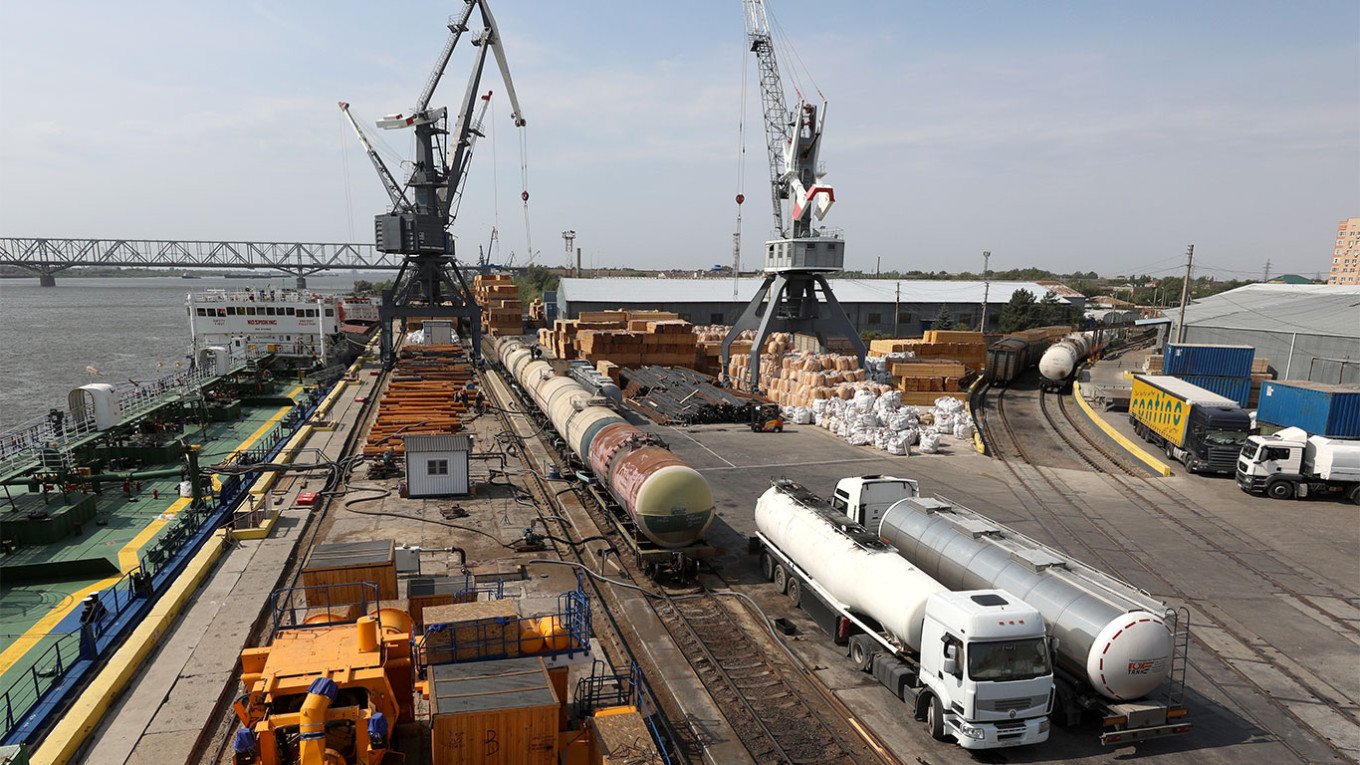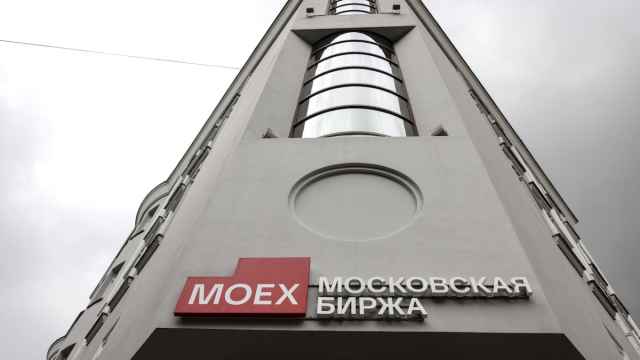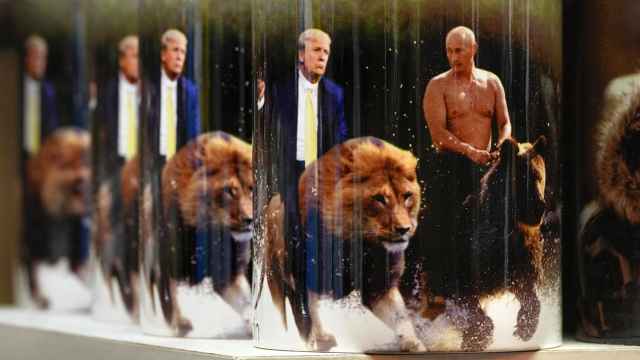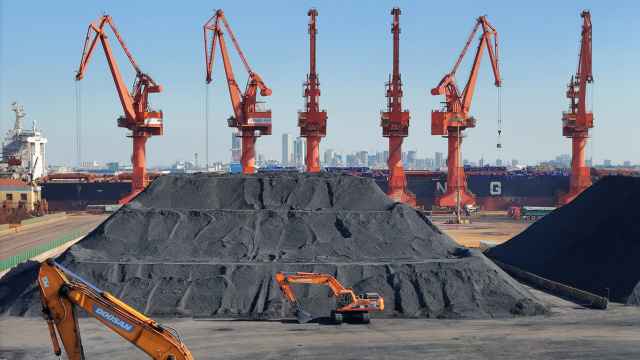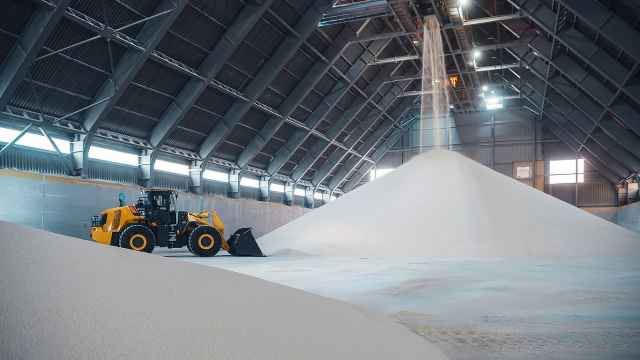With Western sanctions cutting Russia off from many of its former trading partners in the West, Moscow has turned elsewhere to continue its exports since February 2022. The completion of the International North-South Transport Corridor (INSTC) is now a strategic goal for Moscow. The ability to bypass Western-aligned countries will not only be vital for Russia’s economy, but it may also help strengthen Russia’s presence in Central Asia and the South Caucasus. However, this may bring Russia into competition with the trade interests of India and China.
Instead of a single route, the INSTC comprises three land and sea routes from Russia all the way to ports on the Persian Gulf, where goods can be shipped onward to India. In the past, goods were shipped around Europe from Russia’s Baltic Sea ports and through the Suez Canal — a much longer journey with risks of bottlenecks and delays. While each route of the INSTC offers advantages in cutting delivery times and skirting Western sanctions, challenges with geography, infrastructure and politics stand in the way of making this project truly effective.
The INSTC’s western route comprises a series of railway and road networks that run along the western coast of the Caspian Sea through Azerbaijan and Iran. Currently, this is the most developed of the three routes, both physically and diplomatically. Russia and Azerbaijan have signed an agreement to coordinate checkpoints to ensure trade flows as freely as possible. But conflict often engulfs the region, as the recent crisis in the disputed territory of Nagorno-Karabakh has shown.
Russia may still find a way to circumvent disruption from these tensions by avoiding laying the route through Azerbaijan. Thawing relations between Moscow and Tbilisi in recent months mean Russia might be able to restore rail links to Armenia via Georgia. If successful, Russia would have a railway connection with both its fellow CSTO member Armenia and Iran.
At the same time, the Trans-Caspian route is crucial for Russia’s relations with Iran, particularly since it helps Moscow escape the watchful eye of the West. According to media reports, the two countries mainly use this route for transporting military equipment. In September 2022, intelligence data revealed a spike in the number of gaps in vessel tracking data in the Caspian Sea shortly after the United States and Ukraine accused Moscow of acquiring Shahed drones from Tehran. This evasive tactic allows the countries to hide part of their journeys, indicating that the exchange of lethal aid is likely taking place.
Russian ports in the Caspian Sea cannot cope with the surging cargo flows due to a lack of docking sites, terminals, cranes and other infrastructure in the port city of Astrakhan as well as congestion in the Volga-Don Canal. The lack of capacity this creates is especially dire in winter, when ships stand idle in Astrakhan for anywhere from five to 30 days due to a shortage of port facilities.
Geography poses a key challenge to the development of a third route along the eastern shores of the Caspian Sea, as it needs to pass through mountainous terrain on the Turkmenistan-Iran border. Similarly, compared to other routes, Russian freight travels through more state borders and is exposed to more bureaucracy — such as customs procedures and weight restrictions — thus making delivery less cost-effective.
Poor development in Uzbekistan, Turkmenistan and Iran is another obstacle. Key trade arteries like the historic Silk Road have passed through Iran for centuries, allowing successive empires situated along the route to accumulate vast wealth. But today the country’s northern ports lack modern infrastructure, and few of its railways are electrified.
Unlike the western route, there is no formal coordination between participant states. Differences in national policies around transportation requirements and tariffs hinder the development of the INSTC.
At the same time, many of the countries that form parts of the INSTC have been targets of China’s Belt and Road Initiative, an ambitious global infrastructure project launched in 2013. Central Asia may be an arena for the competing interests of Russia, China, and India, and states in the region can choose to prioritize cooperation with one of these major powers over another.
Despite calls for connectivity between Belt and Road and the INSTC from Russia, Iran, Azerbaijan and Central Asian countries, voices in Beijing are concerned the INSTC may allow India to lower its dependence on routes through Pakistan and Afghanistan to access natural resources and markets of Central Asia. Moreover, the geopolitical interests of the countries along the routes, as well as neighboring states like Turkey, do not always coincide and lack formal coordination.
In theory, the INSTC will allow Russia to sidestep trade obstacles caused by Western sanctions — but cannot escape the U.S. and EU’s influence completely. Western investment in Indian ports and Central Asian railroads will be key to developing the route’s infrastructure. The West can also threaten countries with secondary sanctions if they import Russian goods.
But the West can lift these sanctions if it believes that doing so would be in its interests. This happened in 2019 when, under former U.S. President Donald Trump, Washington allowed India to invest in Iran’s Chabahar port, giving New Delhi the ability to build economic relations with Central Asia. A new administration in Washington or Brussels could significantly alter the balance of power in the region, and thus the INSTC’s future.
Consolidating the INSTC will be a great test of Russian diplomacy. Moscow will need to convince not only participant states but regional powers like China and India to work for their interests, rather than trampling on each other and monopolizing valuable infrastructure. Though the INSTC is intended to avoid confrontation with the West, Russia might find that the globalized nature of trade means the plan is less foolproof than it hoped.
A Message from The Moscow Times:
Dear readers,
We are facing unprecedented challenges. Russia's Prosecutor General's Office has designated The Moscow Times as an "undesirable" organization, criminalizing our work and putting our staff at risk of prosecution. This follows our earlier unjust labeling as a "foreign agent."
These actions are direct attempts to silence independent journalism in Russia. The authorities claim our work "discredits the decisions of the Russian leadership." We see things differently: we strive to provide accurate, unbiased reporting on Russia.
We, the journalists of The Moscow Times, refuse to be silenced. But to continue our work, we need your help.
Your support, no matter how small, makes a world of difference. If you can, please support us monthly starting from just $2. It's quick to set up, and every contribution makes a significant impact.
By supporting The Moscow Times, you're defending open, independent journalism in the face of repression. Thank you for standing with us.
Remind me later.


